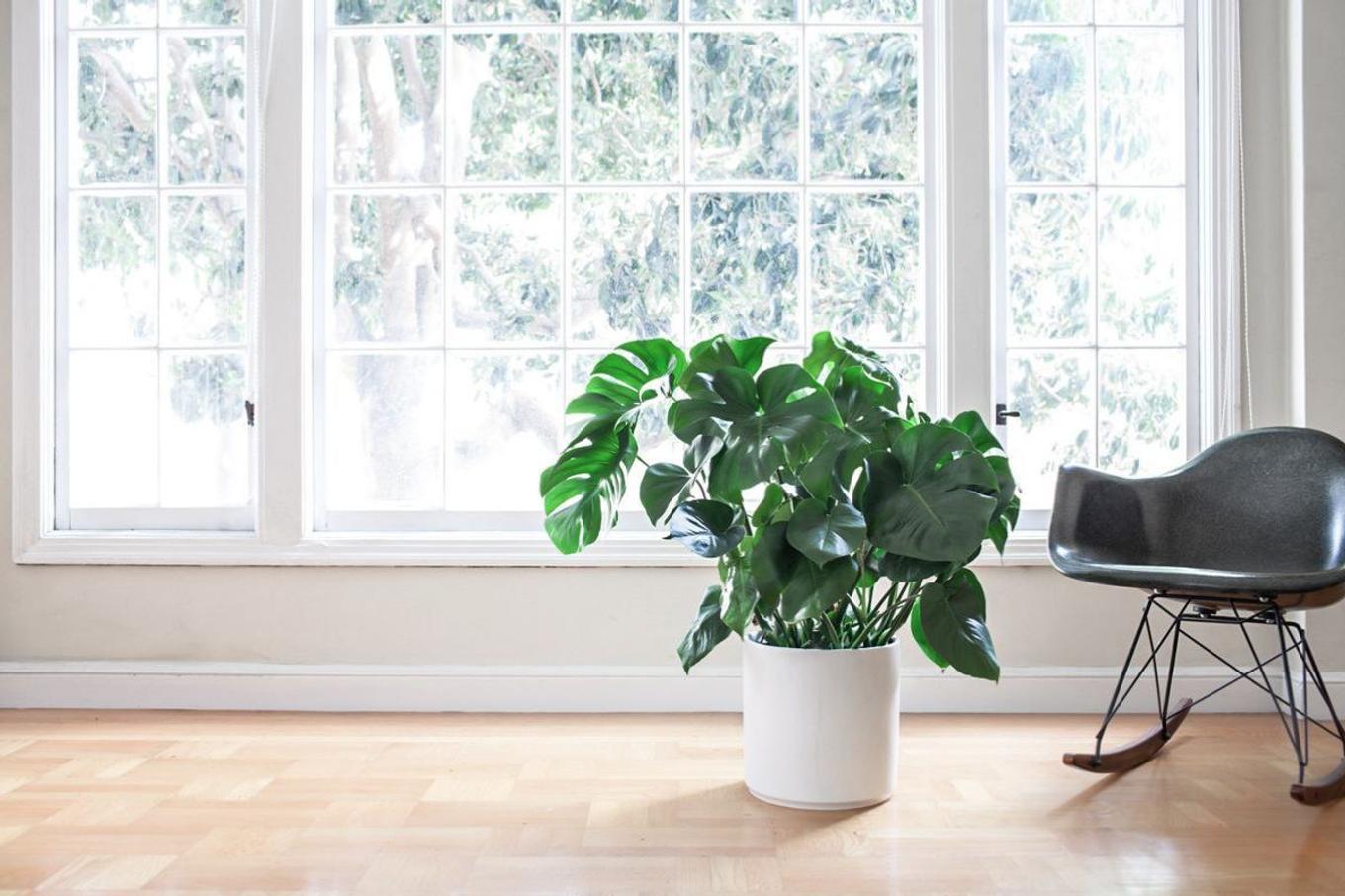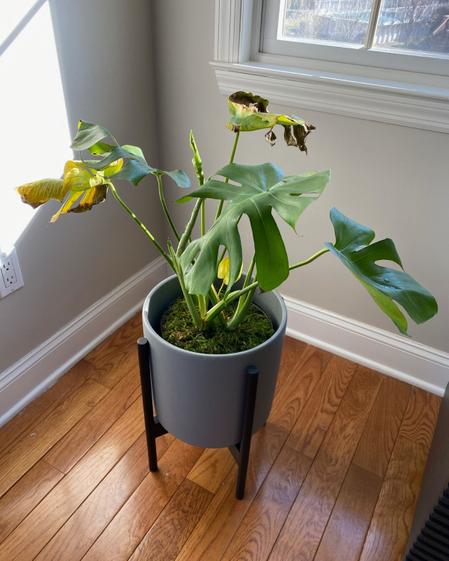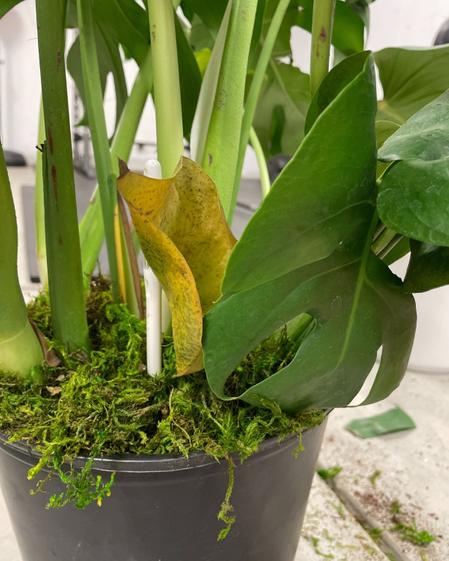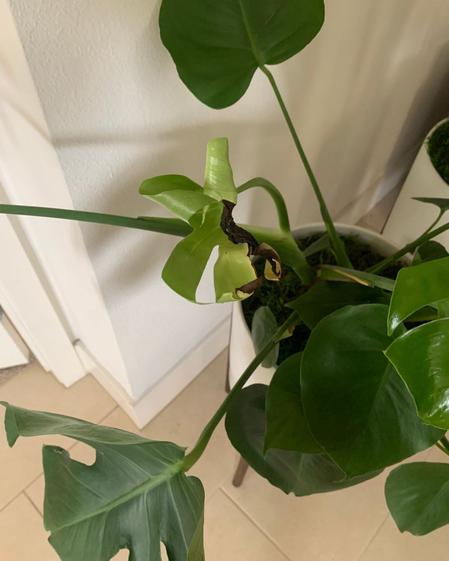{{ this.results.length }} Results
Your search for {{ this.pattern }} didn't return any results.
Monstera Deliciosa Care Guide

With its dramatic leaves and bold presence, the Monstera Deliciosa has reclaimed its status as a must-have houseplant—especially popular among interior design enthusiasts and plant lovers alike. In this guide, you'll find everything you need to know about Monstera care: from ideal light conditions and watering schedules to helpful tips for solving common issues. Whether you're just getting started or looking to level up your indoor jungle, this guide will help you keep your Monstera thriving.
Simple Care Instructions for the Monstera Deliciosa
Light Requirements
Monsteras thrive in bright, indirect light, which mimics the dappled sunlight they receive in their native tropical environments. While they can tolerate medium light conditions, too little light may slow growth and lead to smaller leaves. Avoid placing your Monstera in direct sunlight—prolonged exposure can cause leaf burn and discoloration.
Watering Needs
Allow the top few inches of soil to dry out completely before watering your Monstera. When it’s time to water, do so thoroughly until excess drains from the bottom of the pot. In general, once a week is a good starting point, but always check the soil first—overwatering is one of the most common issues with Monstera care. During the cooler months, your plant will need less frequent watering, so adjust accordingly.
Need help with watering? Use a moisture meter to always know the best time to water. Shop our favorite minimalist moisture meter here.
Humidity and Temperature
Monsteras prefer warm, humid conditions that replicate their native tropical habitat. Aim for indoor temperatures between 65°F and 85°F (18°C to 29°C), and try to keep humidity levels above 50%. If your home is dry—especially in winter—consider using a humidifier or placing your Monstera near a pebble tray with water. Avoid exposing your plant to cold drafts or sudden temperature changes, which can stress the foliage.
Soil and Fertilizing
Monsteras grow best in a well-draining, nutrient-rich potting mix. When provided with the right care, they can grow rapidly—often reaching heights of up to 10 feet indoors. To support this vigorous growth, feed your Monstera once or twice a month during the active growing season (spring and summer) using a high-quality indoor plant fertilizer. You can also supplement with foliar feeding year-round to boost nutrient absorption through the leaves.
Common Problems and Troubleshooting Tips
No Splits in Monstera Leaves
Symptoms: Leaves are fully formed but lack the signature holes or splits (fenestrations).
Cause: Most commonly due to the plant’s age or insufficient light.
Solution: Monstera leaves develop splits as the plant matures and receives adequate bright, indirect light. Young plants often have solid leaves, and this is completely normal. To encourage fenestration, be patient and ensure your Monstera is getting plenty of indirect sunlight.
Yellowing Leaves on a Monstera
Symptoms: Leaves turn yellow, sometimes with brown, crispy edges.
Cause: Most often caused by overwatering, but can also result from low humidity or pest issues.
Solution: Check that the top few inches of soil are completely dry before watering. Overwatering is the most common culprit—let the soil dry out fully if it feels soggy. Brown-edged yellowing may signal dry air, so increase humidity with regular misting. If pests like spider mites are suspected, rinse the foliage thoroughly and apply an insecticidal treatment.
Drooping Monstera Leaves
Symptoms: Leaves and stems appear limp, wilted, or sagging.
Cause: Usually due to underwatering, overwatering, or a recent change in environment (like repotting or relocation).
Solution: First, check the soil—if it’s bone dry, give your Monstera a thorough watering. If it’s overly wet, allow the soil to dry out and adjust your watering routine. Monsteras may also droop temporarily after being moved or repotted; give them a few days to adjust. Ensure your plant has proper drainage, stable temperatures, and plenty of bright, indirect light.
Leggy Monstera Growth
Symptoms: Long, stretched-out stems with sparse foliage; the plant looks thin or uneven.
Cause: Insufficient light is the most common reason Monsteras become leggy.
Solution: Move your Monstera to a spot with more bright, indirect light to encourage fuller, balanced growth. You can also prune leggy stems to promote bushier foliage and consider using a moss pole or plant support to help it grow upward and stay compact. Rotate the plant regularly so all sides receive equal light exposure.

An overwatered Monstera.

One yellow leaf is no cause for concern!

Leggy Monsteras need more light.
Seasonal Care Tips
Monsteras are tropical plants that respond to seasonal changes in light, temperature, and humidity. In spring and summer, your Monstera will enter its active growing phase—this is the best time to fertilize regularly and consider repotting if needed. As fall and winter roll in, growth slows down, so reduce watering frequency and fertilizing to avoid stressing the plant. Be mindful of lower indoor humidity during colder months; using a humidifier or misting occasionally can help keep foliage lush and healthy. If your Monstera is near a drafty window or heater, move it to a more stable spot to avoid leaf damage.